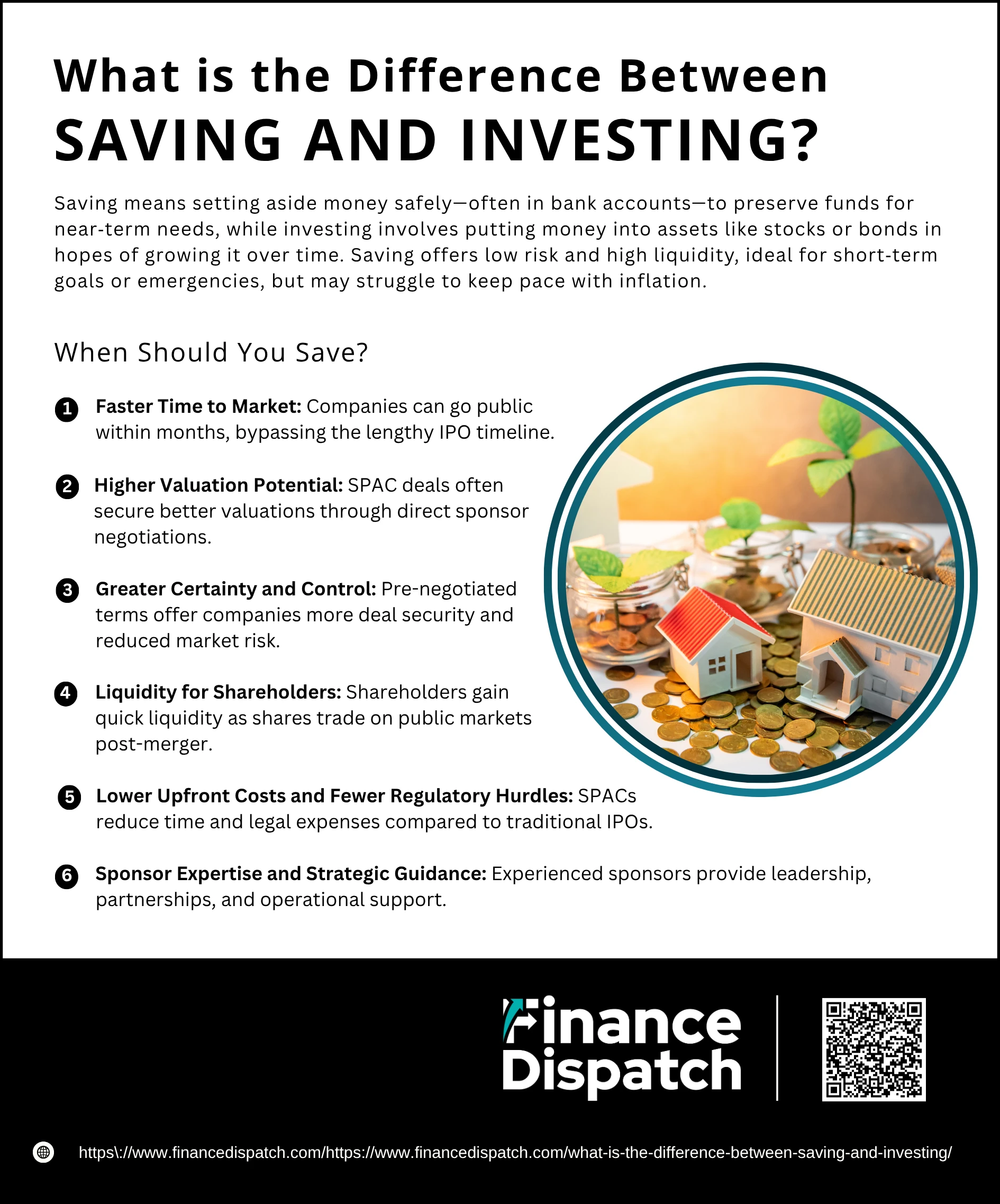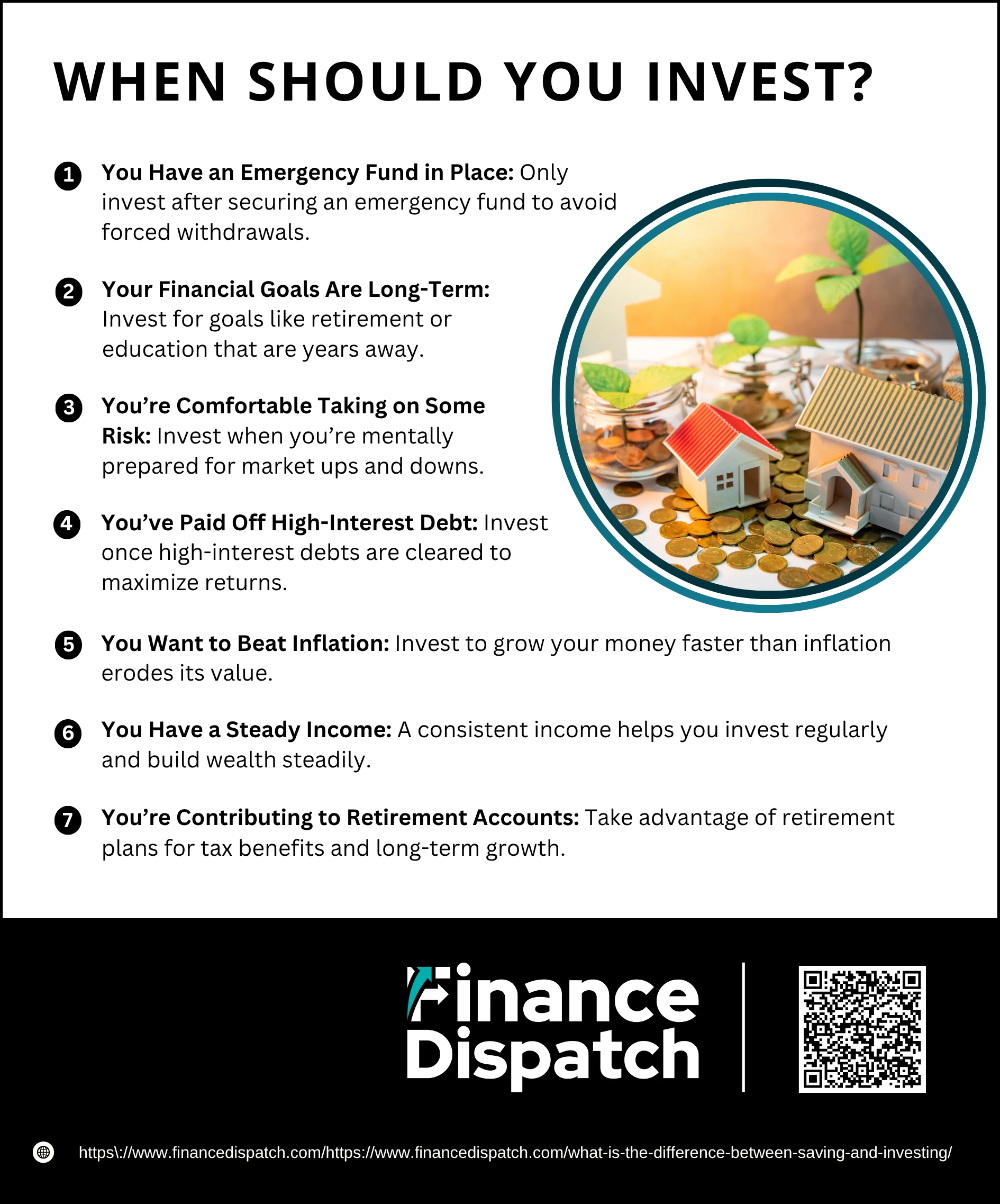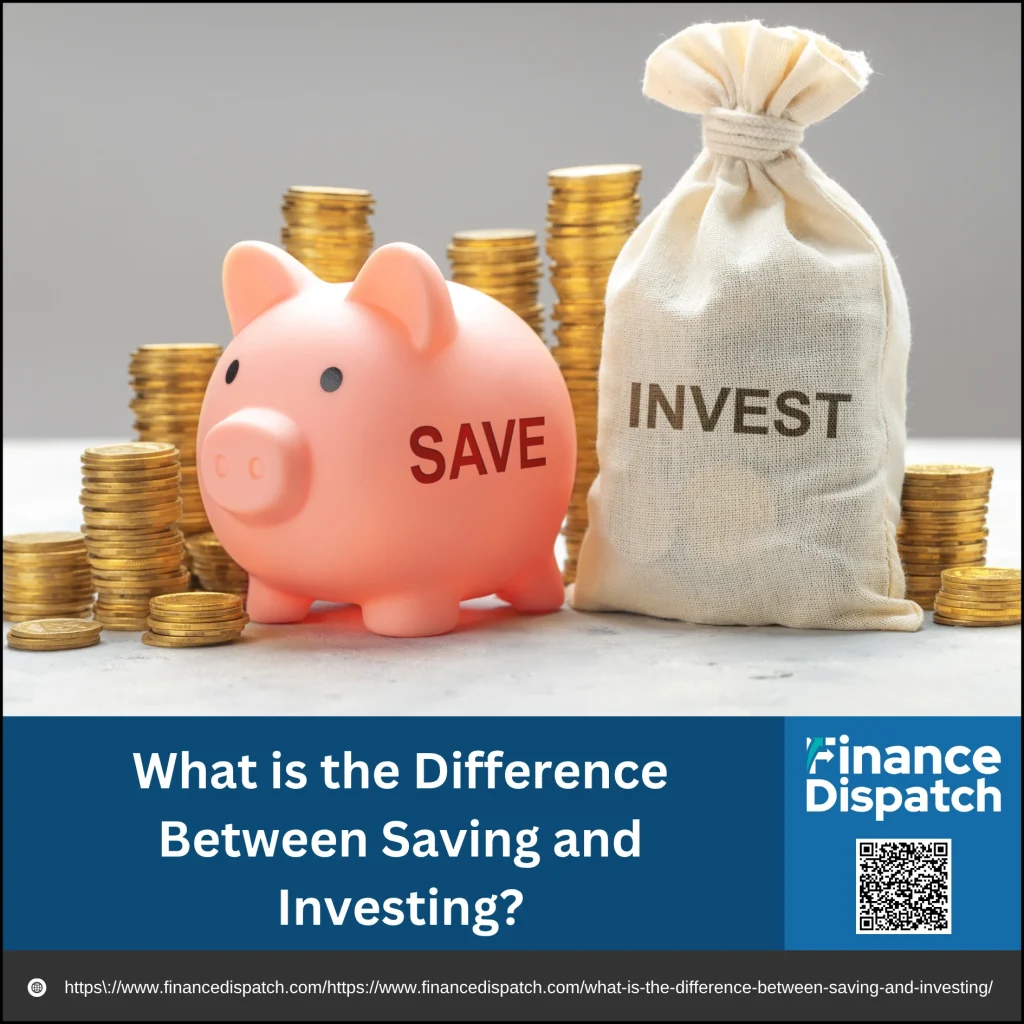When it comes to managing your finances wisely, understanding the difference between saving and investing is a fundamental first step. Although both are essential tools for building a secure financial future, they serve different purposes and involve varying levels of risk and reward. Saving typically focuses on setting aside money for short-term needs or emergencies, offering safety and easy access. Investing, on the other hand, is aimed at growing your wealth over the long term, often by accepting some degree of risk. In this article, we’ll explore what sets saving and investing apart, how they complement each other, and how to determine which approach—or combination—is right for your financial goals.
What is Saving?
Saving is the act of setting aside a portion of your income for future use rather than spending it immediately. It typically involves placing money in low-risk, easily accessible accounts such as savings accounts, fixed deposits, or money market accounts. The primary goal of saving is to ensure you have funds available for short-term needs, emergencies, or planned expenses like a vacation or a home appliance. Since savings accounts offer guaranteed returns with minimal risk, they are ideal for preserving capital. However, the trade-off is that the interest earned is usually modest and may not keep pace with inflation over time.
What is Investing?
Investing is the process of using your money to purchase assets with the expectation of generating a return or growing your wealth over time. Unlike saving, which prioritizes security and accessibility, investing involves putting money into instruments such as stocks, bonds, mutual funds, or real estate—assets that can fluctuate in value. The primary goal of investing is long-term financial growth, whether it’s for retirement, a child’s education, or other major life goals. While investing carries a higher level of risk compared to saving, it also offers the potential for significantly greater returns, especially when aligned with your financial goals, time horizon, and risk tolerance.
Key Differences Between Saving and Investing
While both saving and investing help you manage your money for the future, they differ in purpose, risk, and potential reward. Saving is generally used for short-term needs and involves minimal risk, whereas investing is designed for long-term goals and comes with a higher risk but also the possibility of greater returns. Understanding these differences can help you make better financial decisions based on your individual goals and circumstances.
Here’s a table that summarizes the key differences:
| Aspect | Saving | Investing |
| Purpose | Short-term needs and emergencies | Long-term wealth building and goal achievement |
| Risk Level | Low (capital is usually protected) | Medium to high (subject to market fluctuations) |
| Return Potential | Low and predictable (fixed interest) | Higher but unpredictable (market-based gains/losses) |
| Accessibility (Liquidity) | High (funds are easily accessible) | Varies (may involve lock-in periods or market timing) |
| Time Horizon | Short-term (within 1–3 years) | Long-term (typically 5 years or more) |
| Inflation Protection | Weak (returns may not outpace inflation) | Stronger (potential to earn inflation-adjusted returns) |
| Typical Products | Savings accounts, fixed deposits, CDs | Stocks, bonds, mutual funds, real estate |
 When Should You Save?
When Should You Save?
Saving plays a foundational role in financial planning, especially when your priorities involve safety, stability, and immediate access to your money. Unlike investing—which is suited for long-term wealth growth and involves risk—saving provides a secure place for your funds when you need them in the near future. Whether you’re planning for a purchase or protecting yourself from emergencies, knowing when to save can help you stay financially grounded and avoid debt. Below are key situations where saving should take priority over investing:
1. Building an Emergency Fund
An emergency fund is your financial safety net. Life is unpredictable, and unexpected events like job loss, medical emergencies, or urgent home repairs can strike without warning. Saving three to six months’ worth of living expenses in an easily accessible account can provide peace of mind and keep you from relying on credit cards or loans during tough times.
2. Planning for a Short-Term Purchase
If you know you’ll need money within the next one to three years—for example, to buy a laptop, pay for a vacation, or fund a wedding—it’s wiser to save than to invest. Short-term market fluctuations could result in a loss if you invest this money. Savings accounts or fixed deposits provide security and certainty for your upcoming goals.
3. Preparing for a Large Down Payment
When planning to buy a house or car within a few years, putting your money in a savings account ensures it stays safe and available when you need it. A sudden dip in the market could set you back if you choose to invest those funds instead.
4. Avoiding or Paying Off High-Interest Debt
Saving money to pay off high-interest debt—such as credit card balances—is more beneficial than investing. The interest on debt often exceeds any returns you might earn from investments, making debt repayment a top priority.
5. Setting Up Automatic Contributions
Building a habit of saving regularly—even small amounts—through automatic transfers helps establish financial discipline. This habit makes it easier to reach your goals without having to make a decision every month.
6. Creating a Financial Buffer During Unstable Income Periods
For individuals with variable or seasonal income (like freelancers, gig workers, or entrepreneurs), saving during high-earning months provides a buffer during slow periods. It ensures financial continuity without the need to borrow or liquidate long-term assets.
 When Should You Invest?
When Should You Invest?
Investing is a critical step in building long-term wealth and reaching significant financial milestones. Unlike saving, which is designed to protect your money and keep it easily accessible, investing is about putting your money to work to generate higher returns over time. However, because investing comes with risk—such as market fluctuations—it’s important to know when you’re financially and emotionally ready to invest. Timing matters, and the right foundation must be in place before diving into the world of investments. Here are key moments in your financial journey when investing becomes the right choice:
1. You Have an Emergency Fund in Place
Investing should only be considered once you’ve built a solid emergency fund with at least three to six months’ worth of essential expenses. This fund protects you from having to sell investments during a downturn or emergency, ensuring your long-term strategy stays intact.
2. Your Financial Goals Are Long-Term
Investing is most effective when your goals are years away. Whether you’re planning for retirement, a child’s education, or buying a home a decade from now, long-term goals benefit from the power of compounding returns. The longer your money stays invested, the more potential it has to grow—even through market ups and downs.
3. You’re Comfortable Taking on Some Risk
Investment values can rise and fall, sometimes sharply. If you can tolerate short-term market volatility and keep a cool head during economic dips, you’re ready to invest. It’s not about avoiding risk entirely—it’s about being mentally prepared to manage it over time.
4. You’ve Paid Off High-Interest Debt
There’s little benefit to investing if you’re paying 20% interest on credit card debt. Once high-interest debts are cleared, it makes more financial sense to start investing your surplus income, allowing your money to earn rather than being drained by interest payments.
5. You Want to Beat Inflation
Inflation steadily erodes the value of money. While savings accounts offer safety, their returns are often too low to outpace rising costs. Investing, on the other hand, provides a chance to grow your wealth faster than inflation, preserving your purchasing power in the future.
6. You Have a Steady Income
A reliable income stream enables you to invest consistently, regardless of market conditions. Regular contributions—through a system known as dollar-cost averaging—help smooth out the impact of price fluctuations and build your investment portfolio over time.
7. You’re Contributing to Retirement Accounts
Employer-sponsored retirement plans like 401(k)s or individual accounts such as IRAs are ideal entry points for investing. These accounts often offer tax advantages, employer matching, and a range of investment options, making them a smart way to build wealth for the future.
Common Myths about Saving and Investing
When it comes to personal finance, saving and investing are two of the most talked-about strategies—yet they’re also surrounded by a lot of myths and misconceptions. These false beliefs can prevent people from taking action or lead them to make decisions based on fear or misinformation. Whether you’re just starting out or looking to refine your financial approach, it’s important to separate fact from fiction. Let’s debunk some of the most common myths about saving and investing:
1. Myth: Saving alone is enough for a secure future
While saving is important for emergencies and short-term goals, it typically doesn’t generate enough returns to beat inflation or support long-term goals like retirement.
2. Myth: Investing is only for the rich
You don’t need thousands of dollars to start investing. Many platforms allow you to invest small amounts, even with just a few dollars a month.
3. Myth: Investing is just like gambling
Unlike gambling, investing is based on research, strategy, and time-tested principles. While risk is involved, smart investing is far from random chance.
4. Myth: You should pay off all debt before investing
While high-interest debt should be a priority, it’s often wise to invest in retirement accounts—especially if your employer offers matching contributions—even while managing debt.
5. Myth: Saving and investing are the same thing
Saving is for short-term needs and low risk; investing is for long-term growth and involves more risk. They serve different purposes and both are important.
6. Myth: The stock market is too risky to invest in
Although markets can be volatile in the short term, long-term investing—especially in diversified portfolios—has historically delivered strong returns.
7. Myth: I’m too young to invest
In reality, the earlier you start investing, the better. Time allows your investments to grow through compounding, which can significantly increase your wealth over the years.
8. Myth: I’m too old to invest
Even if you’re nearing retirement, investing wisely in low-risk options can still help your savings grow and support your income needs later in life.
9. Myth: You need to constantly monitor your investments
While it’s important to review your investments periodically, you don’t need to check them daily. A long-term strategy doesn’t require constant attention.
How to Balance Saving and Investing
Striking the right balance between saving and investing is essential for achieving both short-term security and long-term financial growth. While saving offers safety and liquidity, investing helps your money grow over time. Focusing too much on one and ignoring the other can leave you either unprepared for emergencies or falling short on future goals like retirement. The key is to manage your income wisely and align your approach with your financial priorities, risk tolerance, and timeline. Here’s how you can find a healthy balance between saving and investing:
1. Start with an Emergency Fund
Save at least 3–6 months’ worth of living expenses in a high-interest savings account to cover unexpected costs before you begin investing.
2. Define Your Financial Goals
Clearly separate your short-term (1–3 years) and long-term (5+ years) goals. Save for short-term needs and invest for long-term ambitions.
3. Use the 50/30/20 Budget Rule
Allocate 50% of your income for needs, 30% for wants, and 20% for savings and investments. Adjust the 20% portion based on your financial stage.
4. Automate Both Saving and Investing
Set up automatic transfers to your savings account and investment portfolio. This builds consistency and removes the temptation to spend impulsively.
5. Contribute to Retirement Accounts Early
Prioritize contributions to accounts like a 401(k) or IRA, especially if your employer offers matching. It’s an efficient way to invest for the future.
6. Reassess Your Budget Regularly
Life changes—so should your financial plan. Reevaluate your income, expenses, and goals at least once a year to adjust your saving and investing strategy accordingly.
7. Avoid Extreme Approaches
Don’t put all your money into savings out of fear, or into investments chasing high returns. A balanced approach creates financial flexibility and peace of mind.
Conclusion
Saving and investing are both essential components of a strong financial strategy, each serving a unique purpose in helping you build and protect your wealth. Saving offers security and quick access to funds for emergencies and short-term goals, while investing provides the opportunity for long-term growth and financial independence. Rather than choosing one over the other, the key is to find a balance that aligns with your goals, risk tolerance, and financial situation. By understanding when to save, when to invest, and how to integrate both wisely, you can take confident steps toward a more secure and prosperous future.



